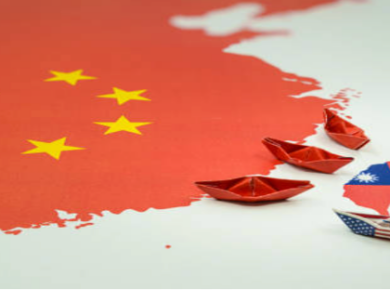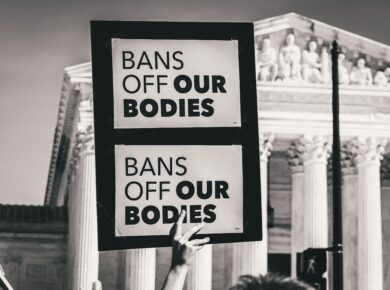Disclaimer: This blog post solely reflects the opinion of the authors and should not be taken to represent the general views of IPPR’s management/ editorial team or those of fellow authors.
For centuries, Afghanistan, the crossroad of Central and South Asia, has lived through proxy wars and foreign invasions. In 1219 AD, Genghis Khan and the Mongol army occupied the area. Between the 16th and 18th centuries, the Uzbek Khanate of Bukhara, Iranian Safavids, and Indian Mughals were the rulers of most of the region (Weinbaum et al., 2020). Ahmed Shah Durrani, king of Afghanistan, and his army conquered the majority of present-day Afghanistan, Pakistan, the Kohistan and Khorasan provinces of Iran, and Delhi (India) (Weinbaum et al., 2020).
In the 19th Century, after the numerous successions of Durrani, the Afghan Empire was under pressure from the Persians in the west and the Sikh Empire in the east. Fateh Khan, leader of the Barakzai tribe, controlled the Afghan empire with his 21 brothers. When he died, the brothers divided the provinces of the empire. It was a time of instability, with numerous Afghan-Sikh wars. At the same time, the British were gaining control in the east and started the “Great Game”, a political and diplomatic conflict between the British and Russian empire, over Afghanistan and other territories in Central and South Asia (Weinbaum et al., 2020).
In April 1978, the communist People’s Democratic Party of Afghanistan (PDPA) seized power in a violent coup d’état against the President Mohammed Daoud Khan, during the Saur Revolution. The first general secretary of the party was Nur Muhammad Taraki.
As a result of its historic past, the Afghan population is divided into several ethnolinguistic groups. The major ethnic groups are the Pashtuns, Tajiks, Hazaras and Uzbeks. There are also 10 other ethnic groups. The official languages are Dari and Pashto, as I have experienced working as a volunteer at the Afghanistan and Central Asia Association (ACAA), but there are many other languages, such as Uzbek, Turkmen, Nuristani and Pashayi. Most of the population is muslim, with a majority of Sunni. Roughly 20% of muslims in Afghanistan are Shia. There are also other religions practised throughout Afghanistan. Some examples are sikhs and hindus, and a minority of jewish and christians.
The 1980’s, were characterised by the Soviet-Afghanistan war. In December 1979, the Soviet Union invaded Afghanistan. Insurgent groups, also called “Mujahideen” and other smaller Maoist groups, fought for 9 years a guerilla war against the Soviet Army and the government of the Democratic Republic of Afghanistan. Pakistani government provided these rebels with covert training centres, while the United States helped them through Pakistan’s Inter-Services Intelligence (ISI). The Soviet Union sent military advisers to support the People’s Democratic Party of Afghanistan, PDPA regime. The US, Pakistan and Saudi Arabia kept pouring billions of dollars in cash and weapons to support the rebels until 1989, when the Soviet troops finally left the country.
After the 11 September 2001 terrorist attacks, and a period of chaos in the country, the US invaded Afghanistan to tear down Al-Qaeda and remove the Talibans from power. A portion of the US forces in Afghanistan also operated under the command of NATO. To date, the war in Afghanistan is the US’s longest war thus far and already cost a few trillion dollars.
Based on the US-Taliban agreement, taken in November 2020, the remaining 3,500 troops would have left in May 2021. Instead, on April 14, 2021, Biden announced a complete US withdrawal by the 11 of September 2021, a symbolic date. However, the situation raises questions of what will happen after the withdrawal of the US and NATO troops, also considering that the US did not condition its withdrawal on successful peace talks and reduction of Taliban’s’ attacks.
Where is Afghanistan headed for the future?
Although the first democratic elections already took place in 2004, when Hamid Karzai was elected president with 55.4% of votes, the Afghan political unity remains fragile. Last year alone, 8.820 civilians were killed in Afghanistan. Last week’s explosions in Kabul killed more than 80 people, most of them were students. The situation in Afghanistan is deteriorating and the NATO secretary general, Jens Stoltenberg, has warned that Afghanistan could become a “haven for terrorists”.
If US troops leave too early, there is the possibility of the Islamic States perceiving it as an opportunity to rebuild the caliphate, with the risk of a civil war and a refugee crisis in Central Asia. There are very few signs that the Talibans will engage in peace talks, as they have already announced that they will not participate in any peace conference until foreign troops have completely left. Thus, there are no certainties that the Taliban’s forces will not use this opportunity to take over the country. If the country splits based on regional and ethnic differences while under pressure from the Taliban’s attacks, there could be a civil war.
So far, no agreement has been reached in the peace talks and their outcome is uncertain. As Jens Stoltenberg has warned, “the price for leaving too soon or in an uncoordinated way could be very high” (Aljazeera, 2021). The withdrawal of US troops may worsen the situation to a greater extent. The decision will also impact the Italian and German forces as they rely on American transport and protection for their missions in Northern and Western Afghanistan. They may decide to withdraw their troops as well.
On the other hand, China may want to become more involved in Afghanistan, with the possibility of extending the China-Pakistan Economic Corridor to Afghanistan. For a long time, China has benefitted of the security provided by the US troops, in particular, with anti-China terrorist groups spreading and the fear of potential unrest in its Northwest Xinjiang province. Since 2010, China has increased its economic aid and investment in Afghanistan, including with the Metallurgical Corporation of China (MCC) for the Aynak Copper mines. China has also built fibre optic cables for the country and has started extracting oil in the Amu Darya basin.
However, further instability in Afghanistan could threaten China’s domestic security. The lack of security has already created a barrier for Chinese investments in the country. By the end of 2017, China had invested USD 400 million in investment stocks in Afghanistan, and USD 5.7 billion in Pakistan. In order to avoid greater uncertainty and push for peace agreements, China will most likely invest increasingly in development aid, diplomacy and military assistance, as a result of the US withdrawal. China could push for a reconciliation between Pakistan and Afghanistan in the hope of increasing trade and investment. According to the policy brief ‘Afghanistan beyond 2021’ by Sharan and Watkins (BEF, 2021), Europe and China should use this opportunity to play a more active role in facilitating the peace process between Afghanistan and Pakistan, in particular border disputes and trade disagreements.
The withdrawal of the troops in September will also have a major impact on women’s rights in Afghanistan. Already now, according to the World Health Organisation (2015), 90% of women face threats of sexual violence, physical and psychological abuse, and forced marriage, often conducted by their families. Their freedom of movement is restricted and they have limited possibility of being independent. In 2012, there were 240 cases of honour killings in Afghanistan, 21% by the victims’ husbands, 7% by their brothers, 4% by their fathers, and the rest by other relatives. In March 2015, Farkhunda Malizaka, 27 year old, was publicly beaten and killed by a group of radical muslims in Kabul, for allegedly desecrating the Quran. It was subsequently found out that she did not burn the Quran.
Moreover, according to the United Nations, about 70% of women in Afghanistan are illiterate. Afghanistan operates under Sharia law and the legal age for girl marriage is 16, or 15, if the father agrees to it. Although a foreign military presence has numerous downsides, there have been improvements in the freedom of press and women’s rights. Greater restrictions for women will likely be imposed, in the fields of work and education, when the foreign troops leave. It could all go back to how it was from 1996 to 2001, under the Talibans. Women were not allowed to work outside of their homes, go to school and even go out in public without a male relative. If they did not adhere to the rules, they could face humiliation and public beating.
With so many downsides of an unconditional withdrawal of troops, we can only hope for a broad and sustainable peace agreement. Peace should be maintained at all costs in order to avoid a potential civil war and going back in history. Under the Talibans, human rights would not be taken into account and women may lose all possible opportunities of being independent. Although the US troops were not a permanent solution, after all those years of tension and instability, their withdrawal only fuels a burning fire.
Bibliography
Aljazeera. (2021). NATO chief warns of ‘high’ price of hasty Afghan withdrawal. https://www.aljazeera.com/news/2020/11/17/nato-chief-warns-of-high-price-of-hasty-afghan withdrawal
Arte. (2021) “L’Afghanistan retrouvera-t-il la paix?”. https://www.arte.tv/fr/videos/RC-018674/l-afghanistan-retrouvera-t-il-la-paix/
CFR. (2021) “A failed Afghan peace deal”. https://www.cfr.org/report/failed-afghan-peace-deal
CFR. (2021) “The US war in Afghanistan”. https://www.cfr.org/timeline/us-war-afghanistan ;
Gibbon, N.T., Rahim, N., Faizi, F. (2020) “U.S. troops are packing up, ready or not”. The New York Times.
Glinski, S. (2021) “‘They were triplets, now they are twins’: Sisters torn apart in Afghanistan bomb attack”, The Telegraph.
https://www.telegraph.co.uk/global-health/terror-and-security/triplets-now-twins-sisters-torn apart-afghanistan-bomb-attack/
Sharan, T., Watkins, A. (2021) “Afghanistan beyond 2021: inroads for China’s regional ambitions or security spillover?”, Friedrich Ebert-Stiftung (FES), p.1-5. http://library.fes.de/pdf-files/bueros/kabul/17613.pdf ;
Trenin, D., Malashenko, A. (2010) “Afghanistan a view from Moscow”, Carnegie Endowment for International Peace, p. 1-33.
Webb, J.R. (2021) “With the US exiting Afghanistan, Russia and China may move in”. https://coffeeordie.com/russia-china-afghanistan/ ;
Weinbaum, M.G. et al. (2020). Afghanistan. Encyclopedia Britannica. https://www.britannica.com/place/Afghanistan ;
Wintour, P. (2021) “ UK diplomat: few signs Taliban willing to engage in peace talks”, The Guardian.
https://www.theguardian.com/world/2021/may/11/uk-diplomat-few-signs-taliban-willing-to-engage-in-peace-talks ;
By Camilla Mina
Camilla is a first-year student is Bsc. Social Sciences at University College London. She is passionate about current issues and writing, with a focus on Middle East.






